by Dr. Talia Marcheggiani, ND | Nov 16, 2015 | doctor as teacher, Education, Emotions, Endocrinology, Healing Stories, Hormones, Listening, Medicine, Meditation, Mind Body Medicine, Naturopathic Philosophy, Preventive Medicine, Reflections, Women's health, Writing
Premature Ovarian Failure no longer bears that name. It’s not a failure anymore, but an insufficiency. POF becomes POI: Premature Ovarian Insufficiency, as insufficiency is apparently a softer term than “failure”. For me, it’s another telling example of how our society fears the names of things, and twists itself into knots of nomenclature and terminology rather than facing pain head-on. In this case, the pain is derived from the simple fact that the ovaries do not respond to hormones, that they for some reason die at an early age and cause menopause to arrive decades before it’s due, leading to infertility and risk of early osteoporosis.
Insufficiency, for me at least, fails to appease the sensitivity required for naming a problem. It reminds me of a three-tiered scoring system: exceeds expectations, meets expectations, insufficient performance. These reproductive cells have not been up to task. They’ve proven to be insufficient and, in the end, we’ve labelled them failures anyway—premature ovarian disappointments. Our disdain for the bodies we inhabit often becomes apparent in medical jargon.
What expectations do we have for our organs, really? For most of us that they’ll keep quiet while we drink, stay up late and eat what we like, not that they will protest, stop our periods, make us itch or remind us that we are physical beings that belong here, to this earth, that we can sputter and shut down and end up curb side while we wait for white coats to assist us. Our organs are not supposed to remind us of our fragile mortality. When it comes to expectations overall, I wonder how many of them we have a right to.
In one week I had two patients presenting with failures of sorts. With one it was her ovaries, in another it was his kidneys, first his left, now his right. Both of them were coming to me, perhaps years too late, for a style of medicine whose power lies mainly in prevention or in stopping the ball rolling down the hill before it gains momentum. When disease processes have reached their endpoint, when there is talk of transplant lists and freezing eggs, I wonder what more herbs can do.
And so, when organs fail, I fear that I will too.
In times of failure, we often lose hope. However, my patients who have booked appointments embody a hope I do not feel myself, a hope I slightly resent. In hope there is vulnerability, there is an implicit cry for help, a trust. These patients are paying me to “give them a second opinion”, they say, or a “second truth”.
I feel frustration bubble to the surface when I pore over the information I need to manage their cases. At the medical system: “why couldn’t they give these patients a straight answer? Why don’t we have more information to help them?” At my training: “Why did we never learn how to treat ovarian insufficiency?” At the patients themselves: “Why didn’t he come see me earlier, when his diabetes was first diagnosed?” And again at the system: “Why do doctors leave out so much of the story when it comes to prevention, to patient power, to the autonomy we all have over our bodies and their health?” And to society at large: “Why is naturopathic medicine a last resort? Why is it expensive? Why are we seen as a last hope, when all but the patients’ hope remains?”
Insufficiency, of course, means things aren’t enough.
I feel powerless.
There is information out there. I put together a convincing plan for my patient with kidney failure. It will take a lot of work on his part. What will get us there is a commitment to health. It may not save his kidneys but he’ll be all the better for it. My hope starts to grow as I empower myself with information, studies some benevolent scientists have done on vitamin D and medicinal mushrooms. Bless them and their foresight.
As my hope grows, his must have faded, because he fails to show for the appointment. I feel angry, sad and slightly abandoned—we were supposed to heal together. Feelings of failure are sticky, of course, and I wonder what story took hold of him. was it one that ended with, “this is too hard?” or “there is no use?” or “listen to the doctors whose white coats convey a certainty that looks good on them?”
A friend once told me, the earlier someone rejects you, the less it says about you. I know he’s never met me and it’s not personal, but I take it personally anyways, just as I took it personally to research his case, working with a healing relationship that, for me, had been established since I entered his name in my calendar. In some way, like his kidneys, I’ve failed him. Since we’re all body parts anyways, how does one begin to trust another if his own organs start to shut down inside of him? Why would the organs in my body serve him any better than the failing ones in his?
I get honest with my patient whose ovaries are deemed insufficient (insufficient for what? We don’t exactly know). I tell her there aren’t a lot of clear solutions, that most of us don’t know what to do–in the conventional world, the answer lies mainly in estrogen replacement and preserving bone health. I tell her I don’t know what will happen, but I trust our medicine. I trust the herbs, the homeopathics, nutrition and the body’s healing processes. I admit my insufficiency as a doctor is no less than that of her ovaries, but I am willing to give her my knowledge if she is willing to head down this path to healing with me. Who knows what we’ll find, I tell her, it might be nothing. It might be something else.
It takes a brave patient to accept an invitation like the one above; she was offered a red pill or a blue pill and took a teaspoon of herbal tincture instead. I commend her for that.
There aren’t guarantees in medicine but we all want the illusion that there are. We all want to participate in the game of white coats and stethoscopes and believe these people have a godlike power contained in books that allows them to hover instruments over our bodies and make things alright again. Physicians lean over exposed abdomens, percussing, hemming and hawing and give us labels we don’t understand. The power of their words is enough to condemn us to lives without children, or days spent hooked up to dialysis machines. We all play into this illusory game. They tell us pills are enough… until they aren’t. This is the biggest farce of all.
I can’t participate in this facade, but I don’t want to rob my patient of the opportunity for a miracle, either. We share a moment in the humility of my honesty and admission of uncertainty. I know my patients pay me to say, “I can fix it.” I can try, but to assert that without any degree of humility would be a lie. How can one possibly heal in the presence of inauthenticity? How can one attempt to work with bodies if they don’t respect the uncertain, the unknown and the mysterious truths they contain? In healing there is always a tension between grasping hope and giving in to trust and honestly confessing the vulnerability of, “I don’t know.”
For my patient I also request some testing—one thing about spending time on patients’ cases and being medically trained is that you get access to information and the language to understand it. I notice holes in the process that slapped her with this life-changing diagnosis.
When her labs come back, we find she might not have ovarian insufficiency after all. Doorways to hope open up and lead us to rooms full of questions. There are pieces of the story that don’t yet fit the lab results. I give her a list of more tests to get and she thanks me. I haven’t fixed her yet, but I’ve given her hope soil in which to flower. I’ve sent her on a path to more investigations, to more answers. And, thanks to more information in the tests, I’ve freed her and her ovaries from the label of “failure” and “insufficient” and realized that, as a doctor, I can free myself of those labels too. The trick is in admitting, as the lab results have done in their honest simplicity, what we don’t know.
For the moment, admitting insufficiency might prove to be sufficient in the end.
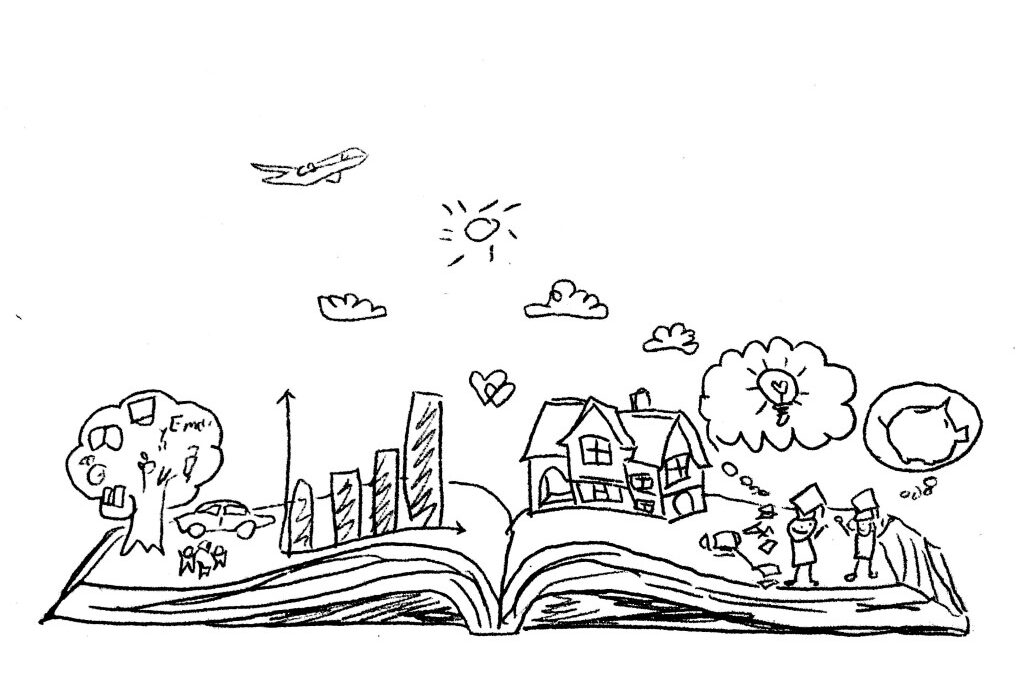
by Dr. Talia Marcheggiani, ND | Jul 20, 2015 | Art Therapy, Community, Creativity, Docere, Education, Emotions, Empathy, Finding yourself, Healing Stories, Health, Medicine, Mental Health, Mind Body Medicine, Mindfulness, Narrative Therapy, Philosophy, Politics, Psychology, Relationships, Self-reflection, Treating the Cause, Volunteering
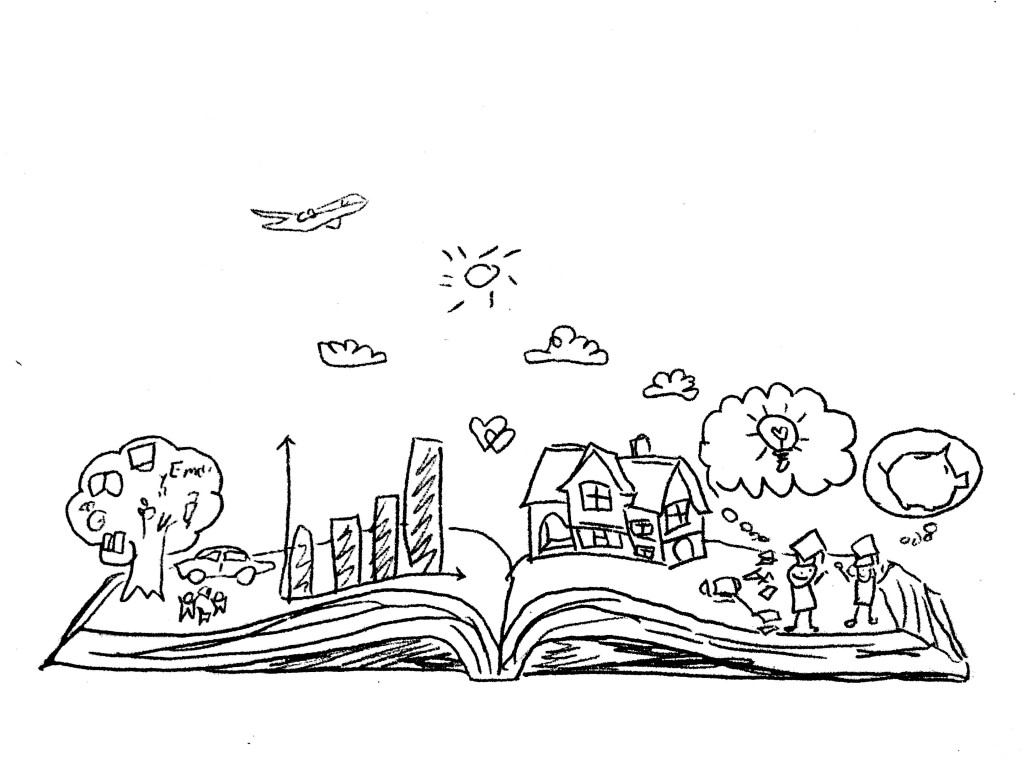 As a child, I was obsessed with stories. I wrote and digested stories from various genres and mediums. I created characters, illustrating them, giving them clothes and names and friends and lives. I threw them into narratives: long stories, short stories, hypothetical stories that never got written. Stories are about selecting certain events and connecting them in time and sequence to create meaning. In naturopathic medicine I found a career in which I could bear witness to people’s stories. In narrative therapy I have found a way to heal people through helping them write their life stories.
As a child, I was obsessed with stories. I wrote and digested stories from various genres and mediums. I created characters, illustrating them, giving them clothes and names and friends and lives. I threw them into narratives: long stories, short stories, hypothetical stories that never got written. Stories are about selecting certain events and connecting them in time and sequence to create meaning. In naturopathic medicine I found a career in which I could bear witness to people’s stories. In narrative therapy I have found a way to heal people through helping them write their life stories.
We humans create stories by editing. We edit out events that seem insignificant to the formation of our identity. We emphasize certain events or thoughts that seem more meaningful. Sometimes our stories have happy endings. Sometimes our stories form tragedies. The stories we create shape how we see ourselves and what we imagine to be our possibilities for the future. They influence the decisions we make and the actions we take.
We use stories to understand other people, to feel empathy for ourselves and for others. Is there empathy outside of stories?
I was seeing R, a patient of mine at the Yonge Street Mission. Like my other patients at the mission health clinic, R was a young male who was street involved. He had come to see me for acupuncture, to help him relax. When I asked him what brought him in to see me on this particular day, his answer surprised me in its clarity and self-reflection. “I have a lot of anger,” He said, keeping his sunglasses on in the visit, something I didn’t bother to challenge.
R spoke of an unstoppable rage that would appear in his interactions with other people. Very often it would result in him taking violent action. A lot of the time that action was against others. This anger, according to him, got him in trouble with the law. He was scared by it—he didn’t really want to hurt others, but this anger felt like something that was escaping his control.
We chatted for a bit and I put in some acupuncture needles to “calm the mind” (because, by implication, his mind was not currently calm). After the treatment, R left a little lighter with a mind that was supposedly a little calmer. The treatment worked. I attributed this to the fact that he’d been able to get some things off his chest and relax in a safe space free of judgment. I congratulated myself while at the same time lamented the sad fact that R was leaving my safe space and re-entering the street, where he’d no doubt go back to floundering in a sea of crime, poverty and social injustice. I sighed and shrugged, feeling powerless—this was a fact beyond my control, there wasn’t anything I could do about it.
The clinic manager, a nurse practitioner, once told me, “Of course they’re angry. These kids have a lot to be angry at.” I understood theoretically that social context mattered, but only in the sense that it posed an obstacle to proper healing. It is hard to treat stress, diabetes, anxiety and depression when the root causes or complicating factors are joblessness, homelessness and various traumatic experiences. A lot of the time I feel like I’m bailing water with a teaspoon to save a sinking ship; my efforts to help are fruitless. This is unfortunate because I believe in empowering my patients. How can I empower others if I myself feel powerless?
I took a Narrative Therapy intensive workshop last week. In this workshop we learn many techniques for empowering people and healing them via the formation of new identities through storytelling. In order to do this, narrative therapy extricates the problem from the person: the person is not the problem, the problem is the problem. Through separating problems from people, we are giving our patients the freedom to respond to or resolve their problems in ways that are empowering.
Naturopathic doctors approach conditions like diabetes from a life-style perspective; change your lifestyle and you can change your health! However, when we fail to separate the patient from the diabetes, we fail to examine the greater societal context that diabetes exists in. For one thing, our culture emphasizes stress, overwork and inactivity. The majority of food options we are given don’t nourish our health. Healthy foods cost more; we need to work more and experience more stress in order to afford them. We are often lied to when it comes to what is healthy and what is not—food marketing “healthwashes” the food choices we make. We do have some agency over our health in preventing conditions like diabetes, it’s true, but our health problems are often created within the context in which we live. Once we externalize diabetes from the person who experiences it, we can begin to distance our identities from the problem and work on it in creative and self-affirming ways.
Michael White, one of the founders of Narrative Therapy says,
If the person is the problem there is very little that can be done outside of taking action that is self-destructive.
Many people who seek healthcare believe that their health problems are a failure of their bodies to be healthy—they are in fact the problem. Naturopathic medicine, which aims to empower people by pointing out they can take action over their health, can further disempower people when we emphasize action and solutions that aim at treating the problems within our patients—we unwittingly perpetuate the idea that our solutions are fixing a “broken” person and, even worse, that we hold the answer to that fix. If we fail to separate our patients from their health conditions, our patients come to believe that their problems are internal to the self—that they or others are in fact, the problem. Failure to follow their doctor’s advice and heal then becomes a failure of the self. This belief only further buries them in the problems they are attempting to resolve. However, when health conditions are externalized, the condition ceases to represent the truth about the patient’s identity and options for healing suddenly show themselves.
While R got benefit from our visit, the benefit was temporary—R was still his problem. He left the visit still feeling like an angry and violent person. If I had succeeded in temporarily relieving R of his problem, it was only because I had acted. At best, R was dependent on me. At worst, I’d done nothing, or, even worse, had perpetuated the idea that there was something wrong with him and that he needed fixing.
These kids have a lot to be angry at,
my supervisor had said.
R was angry. But what was he angry at? Since I hadn’t really asked him, at this time I can only guess. The possibilities for imagining answers, however, are plentiful. R and his family had recently immigrated from Palestine, a land ravaged by war, occupation and racial tension. R was street-involved, living in poverty in an otherwise affluent country like Canada. I wasn’t sure of his specific relationship to poverty, because I hadn’t inquired, but throughout my time at the mission I’d been exposed to other narratives that may have intertwined with R’s personal storyline. These narratives included themes of addiction, abortion, hunger, violence, trauma and abandonment, among other tragic experiences. If his story in any way resembled those of the other youth who I see at the mission, it is fair to say that R had probably experienced a fair amount of injustice in his young life—he certainly had things to be angry at. I wonder if R’s anger wasn’t simply anger, but an act of resistance against injustice against him and others in his life: an act of protest.
“Why are you angry?” I could have asked him. Or, even better, “What are you protesting?”
That simple question might have opened our conversation up to stories of empowerment, personal agency, skills and knowledge. I might have learned of the things he held precious. We might have discussed themes of family, community and cultural narratives that could have developed into beautiful story-lines that were otherwise existing unnoticed.
Because our lives consist of an infinite number of events happening moment to moment, the potential for story creation is endless. However, it is an unfortunate reality that many of us tell the same single story of our lives. Oftentimes the dominant stories we make of our lives represent a problem we have. In my practice I hear many problem stories: stories of anxiety, depression, infertility, diabetes, weight gain, fatigue and so on. However, within these stories there exist clues to undeveloped stories, or subordinate stories, that can alter the way we see ourselves. The subordinate stories of our lives consist of values, skills, knowledge, strength and the things that we hold dear. When we thicken these stories, we can change how we see ourselves and others. We can open ourselves up to greater possibilities, greater personal agency and a preferred future in which we embrace preferred ways of being in the world.
I never asked R why the anger scared him, but asking might have provided clues to subordinate stories about what he held precious. Why did he not want to hurt others? What was important about keeping others safe? What other things was he living for? What things did he hope for in his own life and the lives of others? Enriching those stories might have changed the way he was currently seeing himself—an angry, violent youth with a temper problem—to a loving, caring individual who was protesting societal injustice. We might have talked about the times he’d felt anger but not acted violently (he’d briefly mentioned turning to soccer instead) or what his dreams were for the future. We might have talked about the values he’d been taught—why did he think that violence was wrong? Who taught him that? What would that person say to him right now, or during the times when his anger was threatening to take hold?
Our visit might have been powerful. It might have opened R up to a future of behaving in the way he preferred. It might have been life-changing.
It definitely would have been life-affirming.
Very often in the work we do, we unintentionally affirm people’s problems, rather than their lives.
One of the course participants during my week-long workshop summed up the definition of narrative therapy in one sentence,
Narrative therapy is therapy that is life-affirming.
And there is something very healing in a life affirmed.
More:
The Narrative Therapy Centre: http://www.narrativetherapycentre.com/
The Dulwich Centre: http://dulwichcentre.com.au/
Book: Maps of Narrative Practice by Michael White
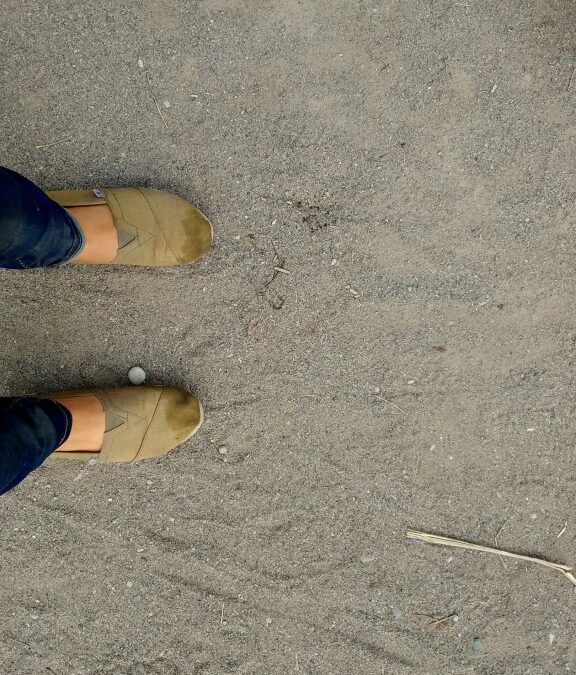
by Dr. Talia Marcheggiani, ND | May 8, 2015 | Balance, Canadian College of Naturopathic Medicine, Clinic, doctor as teacher, Emotions, Finding yourself, Personal, Reflections
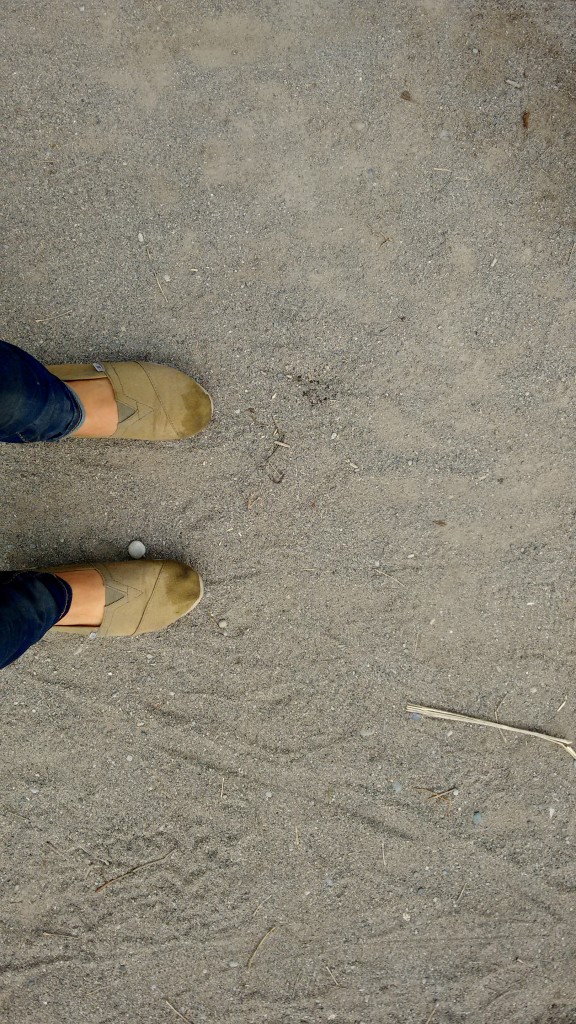 It seems like the only thing I can focus on right now is negative space.
It seems like the only thing I can focus on right now is negative space.
Like the obsession with the space between a model’s waif-like thighs, affectionately termed the “thigh gap”, I have seemingly been attributing way too much time and attention to the lack of things in my life. Life is up in the air right now—a freeze-frame of dust particles that someone has stirred up, and we all wait breathlessly to see where they will settle on the ground.
That’s it: I feel unsettled.
And this unsettled feeling has the tendency to sharpen the focus on the things I don’t have in life. The search doesn’t need to go far. I lack stability in my career, a romantic relationship, my own apartment—the typical signs that life is moving forward. I don’t know what two months will bring, let alone the next few years and, as someone who spent all but two years of their waking adult life in academia, not having a future laid out before them in the form of assignments, tests and other externally imposed milestones leaves me feeling uncontained. There is no one conducting evaluations on my life but myself.
And what an astute evaluator I’ve become:
How am I doing? The best way for the masochist to answer this question is to look at how other people are doing. There are plentiful points of comparison if I want to feel fully inferior. Everyone seems to have more patients than I do, nicer apartments and fulfilling relationships. They seem to be moving somewhere. I just feel stuck, not at a crossroads, but at the edge of a cliff. Am I just supposed to jump? Did everyone else jump? Or did they end up hitching a ride on some lucky parachute that happened to pass by a few minutes before me? Why are they lucky? What are my eyes closed to? When will it be my turn? Or am I simply cursed? The mind stirs up more dust. Sense of personal injustices prevail.
This unsettled feeling can’t last.
So I strive. The answer must lie in working harder. After all, it’s what we’re told to do. Push on. Move forward. Just do it, as Nike says, sweat beading on foreheads. There’s always sweat beading on the foreheads of the mentally unsettled.
I hand out business cards, but no one calls me. I try calling them. I look for other jobs that are poor fits. I take more shifts at the day-job I’m holding on to for secure cash. I go to business networking meetings that I don’t connect with and try to convince myself that I should just force myself to make it work. I search desperately for an apartment, and despair when I don’t get the one I finally love. I hold on to past relationships well past their due dates and complain and obsess and analyze what went wrong to my friends, whose patience can’t possibly last much longer. I notice myself compromising my values and dreams in order to get away from the edge of the cliff.
Still I get nowhere.
So I turned to the only thing I know how to when the mind is desperate and despairing and the spirit is looking to the future for salvation—I turn to the present. The dust in up in the air, so to speak. Everything is unsettled. And yet, how am I? I’m more or less alright. I’m warm. I’m fed. I’m rested. My plight is ridiculous when compared to tiny Vietnamese hands sewing buttons on Banana Republic blouses. Who taught me this sense of entitlement?
I have a place to live and some money coming in (the longer it takes me to find an apartment, consequently, the more I end up saving). I have friends who are genuinely concerned about me and a generous, loving and supportive family. I have hobbies and social events to attend. The blessings in my life are numerous.
Why am I so intent on speeding down the highway of life? What will happen when I arrive at my destination? When I have a beautiful apartment, patients booked months in advance, when I’m in a wonderful, loving and passionate relationship with someone who inspires me, what will I do then? Once the dust is settled, won’t I eventually, decide to stir it up again? If I can’t be content in the present, when will I ever find that elusive contentment that always seems to slip out of our grasp?
Most of all, I ask myself, what is behind my longings? Are the reason I long for these things pure? Or, like a perfume or Coca-Cola ad, do I really want what’s behind what they’re selling me: the beauty, enchantment, lightness, freedom and magic that life often promises us but we seldom encounter in the places we’re told to look.
I wonder if, with eyes closed and mind settled, I’ll be able to breathe clear air again. Perhaps then I’ll find a path down from this cliff, a creative alternative to the already available options: jumping, backing down or sitting and waiting for a magical parachute to come and save me.
Between all the wants, needs, dreams and aspirations, between the striving is space. In that space I might find a little room to breathe. But who can really breathe with dust in their lungs?
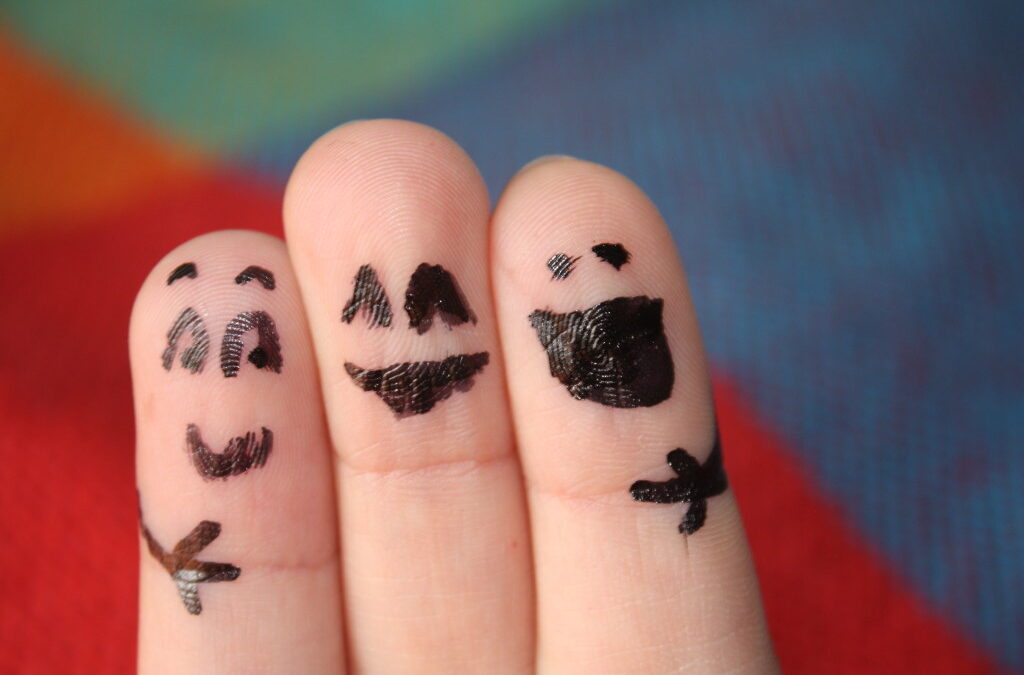
by Dr. Talia Marcheggiani, ND | Feb 16, 2015 | Culture, Emotions, Empathy, Gratitude, Love, Meditation, Mental Health, Mind Body Medicine, Mindfulness, Philosophy, Relationships, Self-care
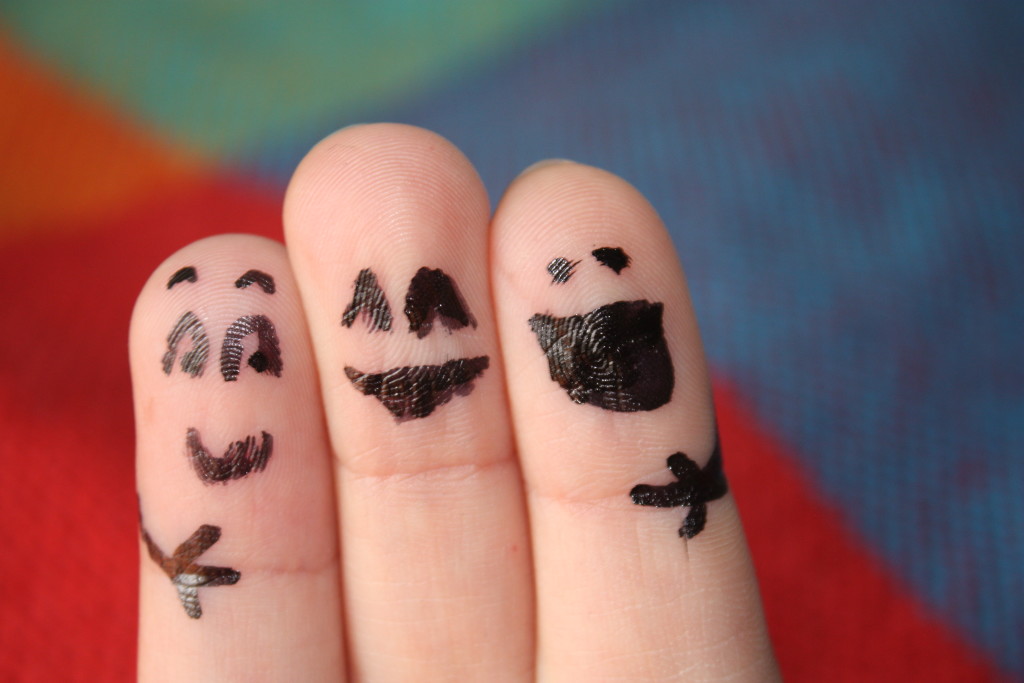 I was in an emotional crisis. My partner and I were fighting. It was my fault and the anxiety I endured from the confrontation was compounded by a deep sense of guilt and shame. I felt powerless as I waited for him to reach out to me so we could fix the problem while at the same time dreading the future confrontation we’d have. I felt isolated. My nerves were shot.
I was in an emotional crisis. My partner and I were fighting. It was my fault and the anxiety I endured from the confrontation was compounded by a deep sense of guilt and shame. I felt powerless as I waited for him to reach out to me so we could fix the problem while at the same time dreading the future confrontation we’d have. I felt isolated. My nerves were shot.
I texted the problem to my friend, A, the psychotherapist, while sitting on the couch in my pyjamas. At the time I remember wanting to include others in my misery, so that people would ask me about it and tell me everything would be alright, that it happens to all of us—it wasn’t that bad—and that I’d get through this thing.
A tells me, “There is nothing you can do now but wait. Waiting takes courage. So, while you’re waiting, don’t forget to self care.”
Self-care: the illusive term we’d often hear tossed around in naturopathic medical school. The hyphenated compound noun referred to anything from applying castor oil packs to getting enough sleep. In my mind, it brings up images of spa-like indulgences: bubble baths, candles, a junky novel—guilty pleasures. True self-care, however, is far from simple self-indulgences. Audre Lorde owns the most powerful definition of self-care I’ve heard, which is this:
“Caring for myself is not self-indulgence, it is self-preservation. And that is an act of political warfare.”
Rather than being a commercial phenomenon—involving trips to the spa, chocolate binge-eating and shopping sprees—self-care is political. Self-care challenges the inequality and oppression of race, gender, class and sexual orientation in society, by providing us with a means to improve our strength and ensure our survival.
When I read Lorde’s quote, I think of my Italian grandmother Nonna. Barely sitting down to enjoy the dinner she had prepared, she dedicated herself to the service of her family’s well-being. Like many other women, especially Italian Catholic women from her generation, she had been taught that any care for herself was selfishness—a symbol of the highest level of vanity and self-obsession. Nonna, like other women of various colours, religions and socioeconomic statuses, was taught to live a life of self-sacrifice. Any attention paid to her own well-being was regarded as an indulgent after-thought. Women are denied a societal sense of self-worth, which is then paradoxically medicated by advertisers telling us to “treat ourselves” to expensive perks because we’ve “earned it”. We are taught not to love ourselves and then instructed how to remedy this lack of self-love with expensive gifts.
Self-care is about finding ways to cultivate and feel deserving of self-love.
True self-care is essential for moving us forward. Because it prioritizes the health and well-being of a person, it affirms self-worth. This has the power to challenge the oppressive forces of racism, misogyny, classism, homophobia and other prejudices. Self-care helps with trauma recovery. It helps heal.
Self-care builds resilience.
We commonly fall into the thought-trap of regarding self-care inaccessible to certain populations; we assume it requires time, money and energy that not all of us have. Katherine from “I Am Begging My Mother Not to Read This Blog” accurately expresses the sentiment with an ironic twist:
“Make time for yourself. After you’ve run that 5K, started a load of laundry, harvested your organic vegetable garden, run to the bank, paid the bills, dazzled everyone with recipes that are cost-effective, healthy, and delicious, thought of something witty and clever to share with your social networking site, caught up on current events and politics, and cleaned all of the house, that special hour set aside just for you is so critical to your well-being.”
While she certainly has a point, something essential is missed in the definition of self-care. Self-care isn’t about shutting out the sound of your screaming children while you pour yourself a martini and fill the tub with hot water. Self-care is about intention, balance, mindfulness, self-awareness and, above all self-love. It is about taking responsibility for one’s own health and well-being. It is about recognizing your physical, mental and emotional needs and ensuring that those needs are met. Self-care is about reducing stress levels. If a pile of dirty laundry is stressing you out, then mindfully washing those clothes while watching the stress leave your body is self-care.
Self-care is an attitude. You can wash your dirty laundry with the frenzy of a thousand cortisol molecules and your mind on the massive list of other things yet to get done, or you can savour the positive feelings of achievement that comes from checking an item off the to-do list. You can breathe the scent of fabric softener, feel the warmth of the clothes that are coming out of the dryer and acknowledge that you are caring for yourself by ensuring you have clean clothes to wear the next day. It’s perspective and intention that creates self-care. That being said, laundry doesn’t necessarily have to be your thing either.
I have a patient who works 6-day weeks. When I asked her what she does for self-care, she looked at me, puzzled. “You know, self-care—how do you take care of yourself?” I tried to clarify. There was still no dawning of realization on her face. I silently chided myself for asking such an insensitive question.
And yet, my patient was taking care of herself. She was drinking more water, eating more vegetables and exercising. She was coming to see a naturopathic doctor and investing in her health. She was doing plenty of self-care; she just didn’t know it.
The SCaR Foundation outlines the BACE method of self-care, which helps us draw awareness to the simple acts we can engage in to care for ourselves.
Body Care involves exercising regularly, eating healthy food, taking medications and herbal supplements as prescribed. It also encompasses getting up to stretch while sitting at a desk, drinking water, getting enough sleep.
Achievement consists of finishing the daily tasks you have on your to-do list, laundry among them. It also includes working towards goals, like studying for a test or doing your work.
Connecting with Others includes spending time with friends, family, or a pet. Social connection is one of the reasons why we’re alive. Being able to reach out to others for help is one of the strongest manifestations of courage and resilience.
Enjoyment encompasses hobbies, favourite pass-times and indulgences. What activities bring joy and happiness to your life?
Self-care should not be pre-determined. When it becomes someone else’s prescription, it is no longer self-care.
Self-care is not always pleasurable. Sometimes it can be quite uncomfortable, such as making the decision to change careers, end a relationship or get in shape. It can be transformative, such as standing up for yourself. Self-love is a revolutionary act and revolutions aren’t always won peacefully. However, learning to listen to the body allows us to determine which decisions are coming from a place of self-love and not anger, hatred or fear.
My particular self-care story ended well. The very act of reaching out to a friend had already begun the process of self-caring (connection). After talking to A, I got up, changed out of my bathrobe, exercised, showered, and put on a homemade face mask of yogurt, honey and avocado (body care). I read fiction on the couch with a hot mug of cinnamon tea (enjoyment). I did yoga, meditated (body care) and went to a friend’s house for lunch, then another friend’s for dinner (connection). I took a course on a subject I love and met other healthcare practitioners while developing a new counselling skill (achievement). A part of me craved isolation, but I intuited that wouldn’t be a restorative act for me at that time and so I forced myself to move on with my activities, knowing that they would improve my positivity and resilience. In the end, because I took care of myself, I was able to face the situation from a place of strength and compassion for both me and my partner. Self-care helped me move past the shame and connect to the most powerful and loving version of myself.
That was my approach to self-care, because it was what I needed. At that time, I needed to feel healthy, strong and social. I needed to be reminded of who I was. Others in similar situations may decide that they need to grieve alone while watching When Harry Met Sally and devouring wine and popcorn, their faces stained with tears. Self-care is about knowing yourself and recognizing and honouring your needs.
Contrary to what we’ve been told, self-care isn’t selfish. It is the highest expression of connectedness. We can’t take care of others if we are not healthy. And we can’t be healthy without taking care of ourselves.
Self-Care Resources:
Methods-of-Self-Care : Free Ebook
Caring About Self-care : Article
Also, check out this Self-Care Journal, by Rachelle Abellar. It has sections for personal affirmations and action plans for when you’re feeling low. You can buy a copy at lulu.com.

by Dr. Talia Marcheggiani, ND | May 19, 2014 | Emotions, Love, Relationships, Writing

There is nothing wrong with living on flat ground. In fact, it can be quite gratifying and liberating. You can walk in whichever direction you choose: right, left, east, west, diagonally. Flat ground is safe. It’s familiar. However, after a while, it becomes inevitable that you’ll want to experience the world from different vantage points. You’ve heard that there is real beauty up there, above the clouds. And that’s when you decide to start mountain climbing.
(more…)
by Dr. Talia Marcheggiani, ND | May 17, 2014 | Breath, Emotions, Empathy, Fiction, Gratitude, Healing Stories, Health, Meditation, Mental Health, Mind Body Medicine, Mindfulness, Psychology, Self-esteem
I woke up in the middle of the night to find the dragon lying in my bed. Snoring politely, he looked very small, about the size of a beagle. He was staying on his side of the bed, so I tried to get back to sleep. I’d met this beast before and knew he often brought with him ominous feelings of death and despair, but sometimes he would show up at night only to be gone in the morning. Maybe this time I wouldn’t need to worry.
The next morning, though, the dragon was still there. It rolled over and looked at me with its yellow lizard eyes. Its grey, shiny scales were smooth and glistening. I felt a sharp shiver of fear run through me. I wondered if this time he was here to stay. I worried about what he might do.
(more…)

by Dr. Talia Marcheggiani, ND | Feb 12, 2014 | Emotions, Empathy, Health, Philosophy, Psychology, Robert Schad Naturopathic Clinic

If you’ve ever participated in the medical system somewhere in the world, chances are there is a medical chart out there with your name on it. I have one in my hands now and I task myself with the job of getting to know it. It is based on a true story: a patient who has entrusted me with his case. I read through the 200-page document, transfixed as stories in the untidy scrawl of half a dozen interns – some of them now well-immersed in practices of their own – unfold on the white pages. These pieces of paper, bound together by a fragile cardboard shell, capture snapshots in time of the encounter between these young practitioners and the patient. I read between the lines. Coffee stains represent early mornings that followed late nights, plainly stated observations reflect the colour of different lenses with which these young naturopaths-in-training saw the world at that time. Their pens tell 6 versions of the same story. Their treatment plans tell the story of emerging practice styles and personal healing philosophies.
(more…)
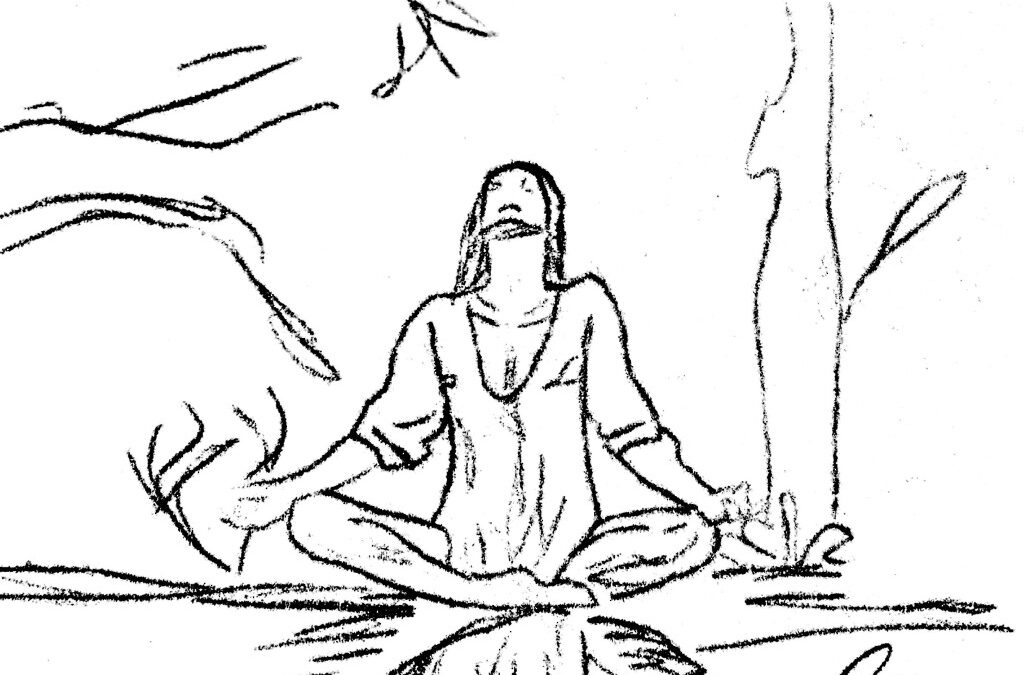
by Dr. Talia Marcheggiani, ND | Sep 15, 2013 | Emotions, Health, Meditation, Mental Health, Mindfulness, Psychology
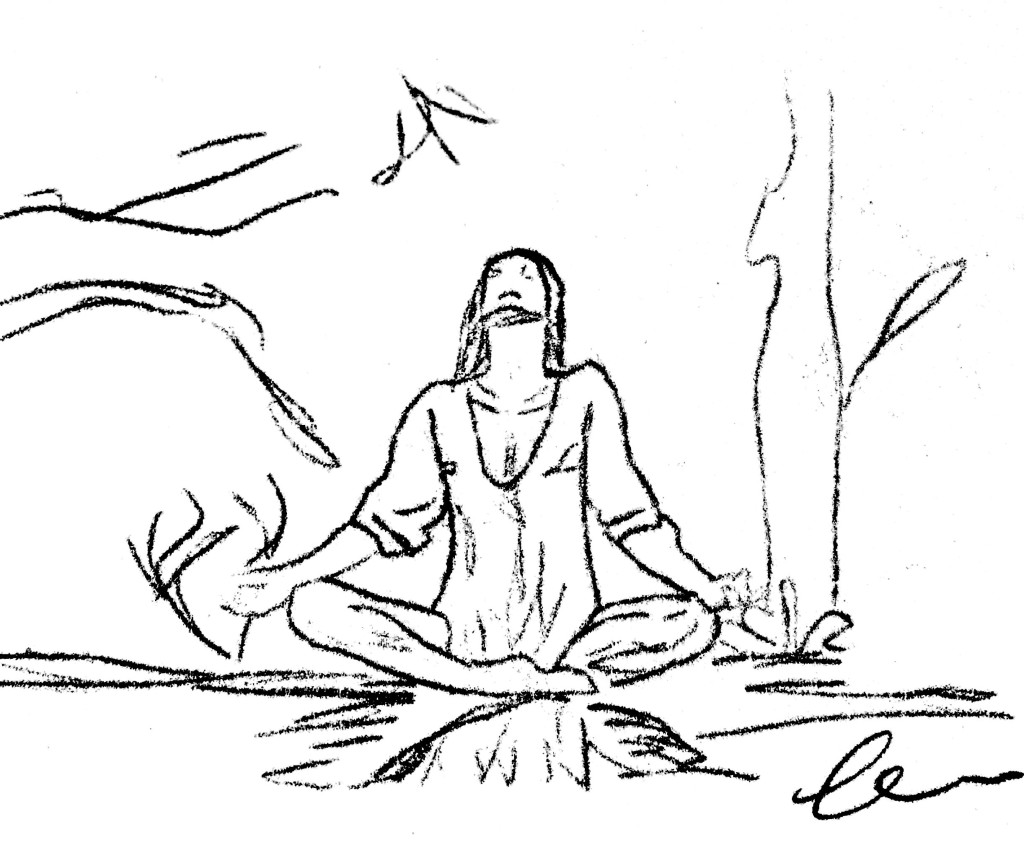 Are some physical ailments “all in our heads?” The mind is a powerful organ, capable of creating reality for us. In the world of health, the mind can be a powerful healing tool, or a powerful hindrance to true cure.
Are some physical ailments “all in our heads?” The mind is a powerful organ, capable of creating reality for us. In the world of health, the mind can be a powerful healing tool, or a powerful hindrance to true cure.
As a Buddhist tenet suggests, all suffering is present in the mind: pain, itching and discomfort especially. The mind, when stressed, has the ability to produce a number of physical symptoms, pain being one of them, but also skin ailments, digestive concerns, weight gain, hypertension and virtually any other complaint take up significant residence in the mind. Is your eczema expressing an anger that you’ve been holding in? Is your inability to lose weight a need to shield yourself from the world? Our homeopathy professor holds that the our symptoms are outer expressions of an inner, emotional state and, in controlling our minds and dealing with repressed emotions, we can resolve the physical as well.
In 1955, the doctor Henry K. Beecher named this tendency of the mind the “Placebo Effect.” According to Beecher, 35% of patients got better when given a sugar pill, indicating that, when the mind believed it was being treated, it spontaneously resolved symptoms based solely on its own expectations. This effect was so pronounced that, to this day, clinical trials are all but tossed out if they are not controlled for the placebo effect by giving one group a sugar pill.
It’s unfortunate that in modern healthcare this healing power of the mind is dismissed as “placebo” and not exploited further. After all, harnessing the power of the mind is cost-effective and side effect-free. There are many ways to enhance the Placebo, or as some of my supervisors like to term it, the “Meaning Response,” such as good patient rapport, a healing intention and therapeutic setting. However, when we talk about placebo, we’re really just talking about tapping into the mind-body connection, harnessing the mind’s powerful ability to influence the physical body. Giving patients a sugar pill is only one part of it.
Seeing patients at the Robert Schad Naturopathic Clinic made it clear to me how much of an obstacle to cure mindset can be. Often times patients’ core beliefs prevent them from getting better, especially if mental and emotional issues are at the root of their physical concerns. In many cases there is an ingrained belief of benefit to being unwell, or an unconscious fear of getting better. I find that identifying this fear helps untangle some of the mental obstacles to cure and helps patients approach healing with a renewed enlightenment.
Tapping into these unconscious beliefs is difficult, however. If approached from the wrong angle, the topic can seem insulting or belittling from the patients’ perspective. There are books such as “Messages from the Body” or Louise Hay’s “Heal Your Life”, that attribute emotional afflictions to physical ones in a dictionary-like layout, however the emotions behind a complaint are individualized and therefore such mind-body exercises are best explored on an individual level.
In the book Fat is a Feminist Issue, a comprehensive self-help book for compulsive eating and negative body image, there is a useful visualization that helps individuals access the feelings and beliefs that are preventing them from getting well. This book focusses on disordered eating and weight loss, however I’ve used the same visualization for a variety of complaints, including depression, circulatory problems, chronic infections and skin issues. The visualization consists of asking the individual to observe themselves as they are and then imagine that their condition is getting worse, then better. The visual dramatization often allows the individual to access the deep-held feelings, both positive and negative, that accompany both the worsening of and the alleviation of their complaint.
To truly access the deeper-held feelings, this meditation should be performed repeatedly. Those who attempt the visualization commonly realize:
1) There are positive aspects to having the condition: the condition protects them in some way, the condition benefits them in some way.
2) There are negative aspects to recovering: There is something threatening about the person they could become or the life they could lead without being burdened by the condition. There is something frightening about moving forward.
For stubborn conditions that do not respond to treatment, or conditions that commonly relapse, it becomes clear that, unless the mental-emotional reasons for having the condition or avoiding remission are addressed, cure is impossible.
This visualization is best done lying down and relaxed. It can be done with a trusted healthcare practitioner or alone as a meditation exercise. The party scene can be substituted for another scene that may be more relevant for you and words pertaining to your specific condition can be substituted as well. The dots (…) indicate a pause in the narrative.
“Fat/Thin Fantasy” from Fat is a Feminist Issue by Susie Orbach
I’d like you to close your eyes, get as comfortable as you can, follow your breathing, in and out, in and out, and relax…
I’d like you to imagine that you are at a party…. This can be either a real party or an imaginary one… It might be a dancing party, a talking party, a small intimate party… Set the scene and take notice of your thoughts…. feelings… and body sensations… What are you wearing?… How do you feel in those clothes?…. What is your posture like?… Try and feel yourself in your body…. Now notice your behaviour at this party…. Are you an observer?… Are you actively mixing with other people?…. do you feel withdrawn?….
As you observe yourself at this party, I’d like you to imagine that (your condition is worsening)… How do you feel?… Try to be aware of your feelings…. and thoughts….observe any negative feelings about (having your condition worsened)… observe any positive feelings about (feeling this way)… what are you wearing?…. How is your body positioned?…. What is going on at the party and how are you interacting with the other people there?…. Now, imagine that (your condition) is communicating with the people at the party…. What is it saying to others?… is there a way in which it helps you to (have this condition) in this situation?… Does (having the condition) allow you to do or say certain things or act in particular ways?…
Now imagine that (your condition) is slowly vanishing, fading away and, in this visualization, you are completely healthy…. can you see yourself?…. can you feel your body (without the condition)?… notice what you are wearing…. what do your clothes say about you?… notice your body position…. you posture…. what do you see from the perspective of being completely healthy?… do you view the party, other people, with different eyes?… how do the people at the party view you?…. How do you feel?…. pay attention to any feelings that arise… positive feelings…. and negative feelings… are you sure of yourself?…. do you feel vulnerable?… are you you?…How are you getting on with the others at the party?… Are there differences in the way that you interact with others?…. Is there anything scary of unpleasant about (having this condition)?…
Now I’d like to you to imagine that you are back to the body you have now…. does the atmosphere change?… can you contact any feelings of relief about being back in your present body?… Allow yourself time to experience whatever feelings are coming up… notice your responses to other people… how you feel about yourself… watch these feelings without judgement, as an observer….
Now, look back over this entire visualization exercise…. see what new information came up for you about yourself… When you are ready, come back into the room and open your eyes…
Reference:
Orbach, Susie (1978). Fat is a Feminist Issue. Galahad Books: New York, NY.
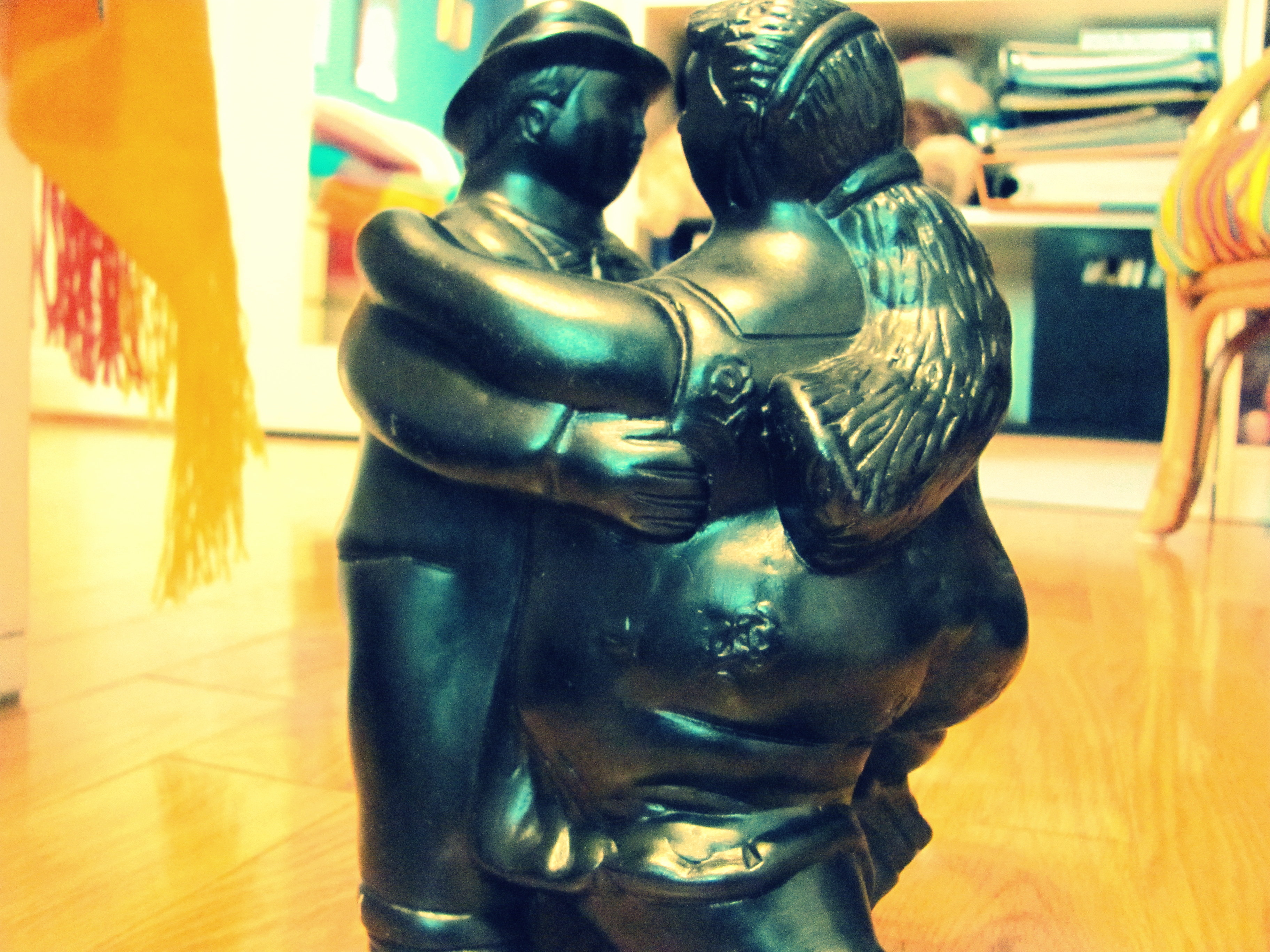
by Dr. Talia Marcheggiani, ND | Mar 21, 2013 | Balance, Emotions, Fitness, Health, Mental Health, Mindfulness, Motivation, Nature Cure, Naturopathic Philosophy, Naturopathic Principles, Self-care, Treating the Cause, Weight Loss, Women's health

This article was first published in My Yoga Online.
With the growing rates of obesity in our society, combined with the tendency for most people who successfully lose weight to gain it back only a short while later, it’s obvious that something is flawed in our society’s general weight-loss strategy.
(more…)
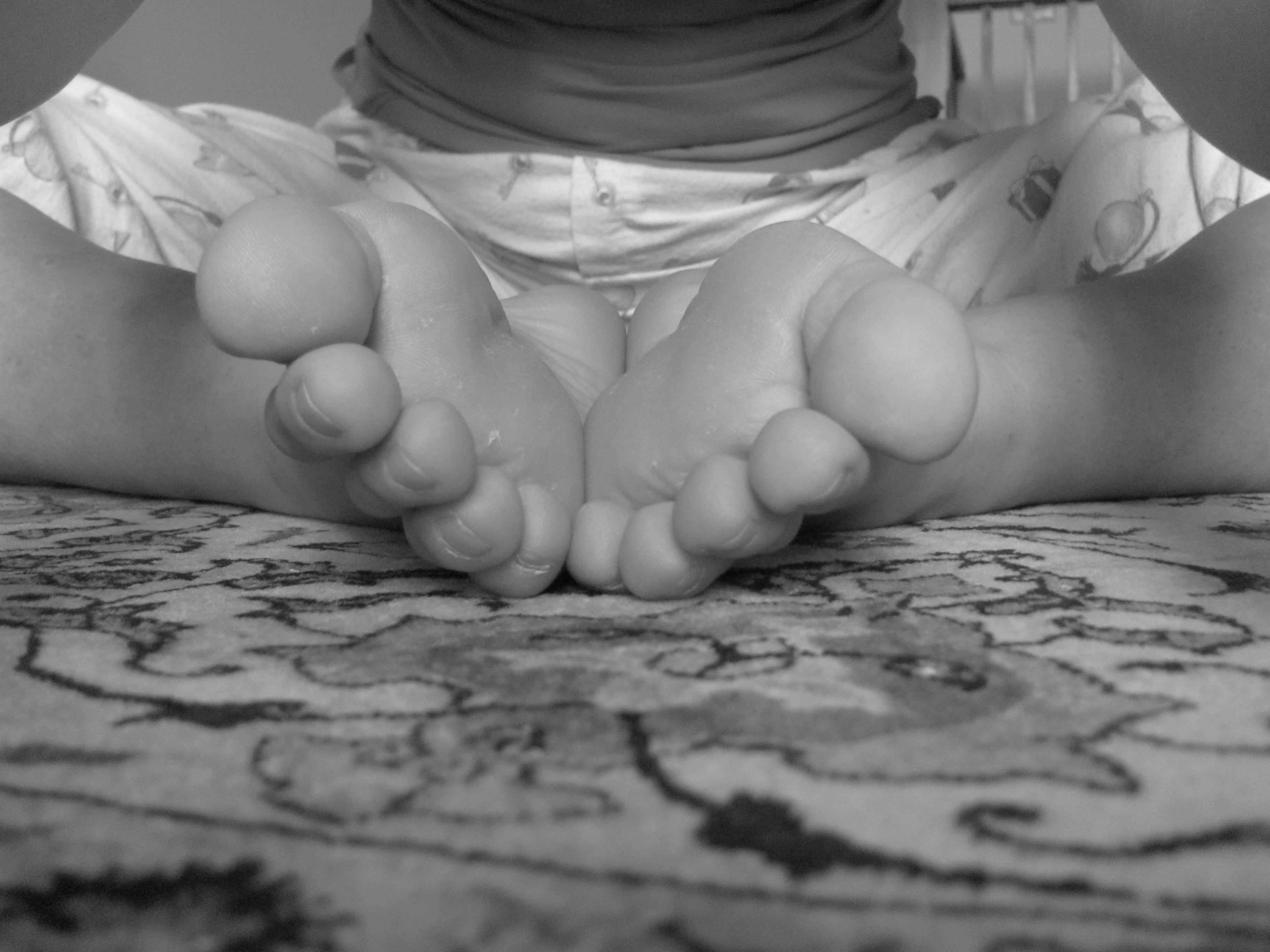
by Dr. Talia Marcheggiani, ND | Nov 1, 2012 | Balance, Beauty, Body Image, Canadian College of Naturopathic Medicine, Diet, Emotions, Finding yourself, Ideal You, Letting Go, Mental Health, Psychology, Self-care, Self-esteem, Summer, Teaching English as a Foreign Language, Women's health

This post was written in the summer of 2012. Although I hate Mayor Rob Ford, I have to hand it to the man; he must really have a strong sense of self to not get himself down over the very open disdain most Torontonians hold for him. I wonder if my ego would take that kind of repeated assault over and over again, especially that whole business with his weight-loss.
I was always kind of a chubby kid and, when society started make me conscious of the fact that this was not the way to be I decided to exercise and, essentially, begin dieting. This has led to a life where I rarely get through a day without at least having the notion weight sail through my mind’s seas. This seems kind of depressing when expressed, but it’s a concern that I work to push through, taking from it what serves to make me healthy and striving to leave behind the parts of it that lead to obsession and self-loathing. Many of us deal with similar mental struggles; young women are brought up in a society where nothing less than perfection is accepted. We have many emotional battles to fight.
Just the other day I was sitting in a Yorkville cafe, near my work, being kept company by my (closed) USMLE Step 1 review book and being kept entertained by watching passersby through the window. Yorkville is an interesting place to people-watch because everyone who struts by looks like they’re trying to find their way to a fashion runway, but got lost and then walked into Holt Renfrew, and then into Starbucks and now they’re back to looking for the runway they’re supposed to be walking down. Everyone is wearing an outfit that probably costs more than my student debt and, most of all, it seems that everyone is skinny.
That day, however, I contemplated my surroundings while sipping my coffee and I thought, while observing a fashionably, particularly stick-like woman, we’re told that that’s the body that all women should live in, regardless of profession, personality or personal health history. We live our lives obsessing over how to squish our own shapes into the size of clothes that woman wears, giving little thought to the organs, tissues and vis medicatrix naturae, or life force, that actually lies inside each of us. As I marinated in this little personal revelation, I took another sip of coffee and admitted, She looks nice, fashionable and healthy and maybe that body shape is good for her. However, there are many shapes of beautiful and I don’t think that shape is good for me.
I leaned back in my chair and felt the contentedness of having released part of a great mental burden.
Fast forward to a few days later: I give my class a speaking and writing assignment partly to kill time, to foster creativity and to improve their language skills, especially writing, which is always abysmal. I have each group generate a list of 10, random, unrelated words and then hand the list over to the other group, who must create a short story using all the words. As a class activity, it actually worked out quite well.
However, one of the groups, headed by a stronger student, who has a rather witty, yet dark sense of humour, created a story featuring, you guess it, me, their teacher. Sometimes I enjoy the limelight of teaching, other times I shy away from it, passing the buck onto the students, which actually works to their favour. Most of the time, however, I appreciate working with other people and getting to know these interesting students from a variety of different countries.
This incident, however, made me want to revert back to a student hiding in the back of the classroom. The gist of their story was that I, Talia, am invited to a party but can’t go because I need a new dress and I can’t find a beautiful dress to fit me because I’m too fat. Urgh. On the outside, I figure it must be a joke, an attempt at being funny. They just didn’t realize what a loaded word fat is for me. I laugh it off, correct some grammar mistakes and make a joke about it. I know deep down that most jokes resemble some form of truth and on the inside my emotions resemble some kind of amusement park ride, beginning at shock then surging between anger, down to hurt and even lower to despair.
It’s not the first time someone else has openly criticized my body. Each incident, while stinging at the first impact, can usually be cooled off with some deep breaths, body work and a few self-loving affirmations. However, it does deepen the contempt I have for how women are viewed in society.
From being lectured by a professional exerciser and dieter for Women’s Health Week at CCNM (she was supposed to discuss body image and the media and instead focused on the existential importance of jumping on a trampoline and limiting grains to rid the body of that “unsightly” stomach pooch) to being the recipient of comments about people who eat healthy but don’t look it, it’s no small wonder that the word weight has set up permanent neural synapses in my brain and, most likely, the brain of every other woman who has ever lived in society. Why is it our job to please those around us by conforming to the correct societal ideal of the times? Is it not enough to be fit, happy and healthy?
So while I wait for the next person to deliver a blow to my apparently fragile ego by pretending they know something about me by judging by the size of my behind, I will be sitting in a cafe, philosophizing about body image and maybe, just maybe, feeling a little bit of extra sympathy for Rob Ford.
















